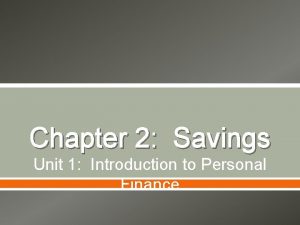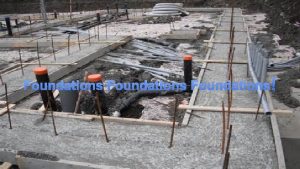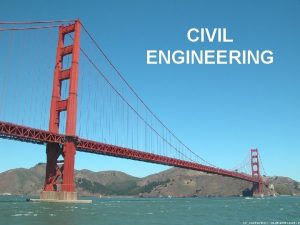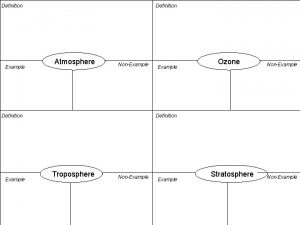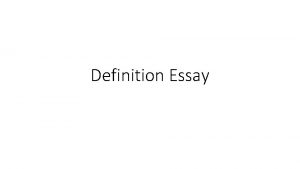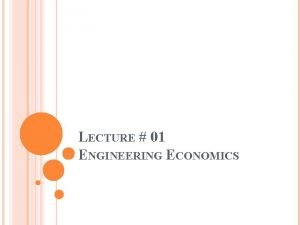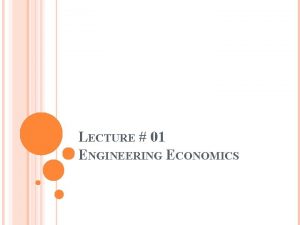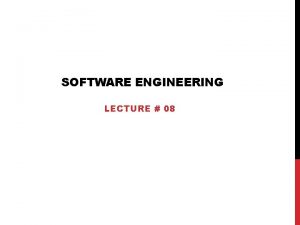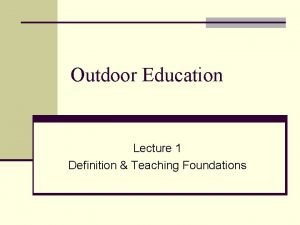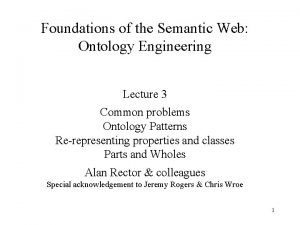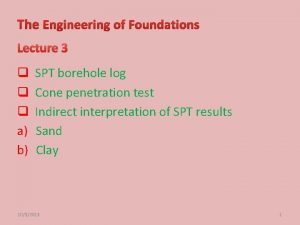The Engineering of Foundations lecture 5 q Definition





















- Slides: 21

The Engineering of Foundations lecture 5 q Definition of Foundations q Types of Foundations q Bearing Capacity of Shallow Foundations

Definition of Foundation is the lowest portion of the structure which exists below the earth surface. It refers to the material whose behaviour the civil engineer has analyised in order to provide satisfactory and economical support to the structure. Although out of sight, the foundation is nonetheless important because if it is deficient in design or construction, the entire building is at risk, Leaning Tower of Pisa, Italy, is a classical example.

Definition of Foundation Functions of Foundation The main function of the foundation is to transfer the load of the structure to the strata on which it is resting. Important Considerations The most important considerations in foundations design: Ø foundations must be stable against shear failure Ø Must not settle beyond tolerable limit to damage the structure.

Types of Foundations There are mainly two types of foundations depending on the nature of sub-soil strata and type of superstructure. 1. Shallow Foundations These foundations are made where the structural loads are carried by the soil or rock directly under the structure. The ratio of depth to the width of the footing usually in a range less than 1 (Df/B ≤ 1). Some of commonly used foundations: o Spread footings o Mat footings

Types of Foundations Some common types of shallow foundations Df B B (a) Spread Footing Df (b) Mat Footing L Fig. 1 Some common types of shallow footings (c ) Combined Footing

Types of Foundations 2. Deep Foundations These foundations are used to transfer the load of the structure to a depth where sufficient support is available if the top soil is weak. In these foundations Df/B > 1. Some of commonly used deep foundations: § Pile foundations § Tapered piles § Belled piles

Types of Foundations Some of common types of deep foundations (a) Pile foundation (b) Tapered pile Fig. 2 Some common types of deep foundations (c) Belled pile

Bearing capacity of shallow foundations Bearing capacity can be defined as the limit load which when applied to the footing causes it to plunge into the ground or settle by very large amount. The effects of increasing the load on the footing is as follows: a) Elastic settlement b) Footing experience (a) further settlement as the soil enters the plastic range the footing edges. (b)

Bearing capacity of shallow foundations c) Settlement continues as the plastic zone increases d) Settlement may become large as the plastic zone expands but flow continues to be constrained by the surrounding elastic zone. e) Unrestrained flow occurs when the plastic zone extends to the surface of the soil mass. (c) (d) Fig. 3 effects of increasing loads on shallow foundations (e)

Bearing capacity of shallow foundations Three possible patterns of failure are expected to occur when the applied load reaches the ultimate limit state. I. General shear failure in this case a triangular wedge-shaped zone of soil marked (I) is pushed down and in turn it presses the zone marked (II) and (III) side ways and then upward, at the ultimate pressure, the soil passes into a state of plastic equilibrium and failure by sliding. Dense sand with relative density > 70% and stiffer clay. Fig. 4 General shear failure

Bearing capacity of shallow foundations II. Local shear failure In the case of local shear failure, the triangular wedge shaped zone of soil (marked I) below the footing moves downward, but unlike general shear failure, the slip surface end somewhere inside the soil. However, some signs of soil plunging are seen. Loose to medium sand with relative density 35 -70% and soft clay. Fig. 5 Local shear failure

Bearing capacity of shallow foundations III. Punching shear failure in the case of punching shear failure, foundations penetrate into the soil without any plunging of the surface. The failure surface never reaches the surface. Relatively loose sand with relative density less than 35%. qu B Fig. 6 Punching shear failure

Bearing capacity of shallow foundations Terzaghi’s Bearing Capacity Equation Ø Terzaghi (1943) extended Prandil (1921) theory Ø His equation was developed on strip footing with L/B > 5. Ø Depth of footing to the width ratio less than 1 Ø Weight of soil above the base of footing may be replaced by uniform surcharge q 0 = ϒ Df Ø Footing base is rough Ø Type of failure is general shear

Bearing capacity of shallow foundations Terzaghi’s Bearing Capacity Equation Fig. 7 Terzaghi bearing capacity analysis Let us imagine that AJ and BJ are two walls that are pushing the soil wedges AJEG and BJDF, respectively, to cause passive failure. Zone I: wedge ABJ elastic zone Zone II: AJE, BJD radial shear zone Zone III: wedge AEG and BDF Rankin’s passive zone JD and JE are arcs of logarithmic spiral DF, EG straight line

Bearing capacity of shallow foundations Terzaghi’s Bearing Capacity Equation Pp should be inclined at angle δ, wall friction to the perpendicular drawn to wedge faces. In this case δ = ϕ. As AJ and BJ are inclined at ϕ to horizontal, Pp should be vertical. Fig. 8 Terzagi’s bearing capacity analysis the forces affecting on elastic wedge Considering the equilibrium of wedge ABJ per unit length.

Bearing capacity of shallow foundations Terzaghi’s Bearing Capacity Equation (1) Where; b = B/2; w = weight of soil wedge ABJ = b 2ϒtanφ; C = cohesive force acting along each face, AJ and BJ that is equal to the unit cohesion times the length of each face C = cb/cos φ. Thus, (2) (3)

Bearing capacity of shallow foundations Terzaghi’s Bearing Capacity Equation The passive pressure in the previous equations is the sum of the contribution of the weight of the soil, ϒ, cohesion, c, and surcharge, q 0. (a) Soil contribution (b) Cohesion contribution (c) Surcharge contribution Fig. 9 Passive force distribution on the wedge face BJ

Terzaghi’s bearing capacity equation Thus, we can write: (4) Where kϒ, kc, k 0 are earth pressure coefficients that are functions of soil friction angle, φ. Note: H = b tanφ Combining Eqs. 3 and 4 we obtain: (5)

Bearing capacity of shallow foundations Terzaghi’s Bearing Capacity Equation (6) (7) (8) The terms Nc, Nq and Nϒ are respectively are the contributions of cohesion, surcharge and unit weight of soil to the ultimate load bearing capacity

Bearing capacity of shallow foundations Terzaghi’s Bearing Capacity Equation It is extremely tedious to evaluate kc, kq and kϒ, Terzaghi gave the following equations for bearing capacity factors. (9) where; (10) (11)

Bearing capacity of shallow foundations Terzaghi’s Bearing Capacity Equation For square and circular footings, Terzaghi suggested the following equations for ultimate soil bearing capacity. (square) (12) (circular) (13) In the case of local shear failure it is assumed: c = 2/3 c and tan φ = 2/3 tan φ. For undrained condition φ = 0, = c, the bearing capacity factors become Nϒ = 0, Nq = 1, Nc = 5. 7
 01:640:244 lecture notes - lecture 15: plat, idah, farad
01:640:244 lecture notes - lecture 15: plat, idah, farad Financial engineering notes
Financial engineering notes Software engineering lecture notes
Software engineering lecture notes Foundation engineering lecture notes
Foundation engineering lecture notes Professional ethics in engineering notes
Professional ethics in engineering notes Section 2 three basic reasons to save money
Section 2 three basic reasons to save money Hình ảnh bộ gõ cơ thể búng tay
Hình ảnh bộ gõ cơ thể búng tay Bổ thể
Bổ thể Tỉ lệ cơ thể trẻ em
Tỉ lệ cơ thể trẻ em Gấu đi như thế nào
Gấu đi như thế nào Glasgow thang điểm
Glasgow thang điểm Bài hát chúa yêu trần thế alleluia
Bài hát chúa yêu trần thế alleluia Môn thể thao bắt đầu bằng chữ f
Môn thể thao bắt đầu bằng chữ f Thế nào là hệ số cao nhất
Thế nào là hệ số cao nhất Các châu lục và đại dương trên thế giới
Các châu lục và đại dương trên thế giới Công thức tính độ biến thiên đông lượng
Công thức tính độ biến thiên đông lượng Trời xanh đây là của chúng ta thể thơ
Trời xanh đây là của chúng ta thể thơ Cách giải mật thư tọa độ
Cách giải mật thư tọa độ 101012 bằng
101012 bằng Phản ứng thế ankan
Phản ứng thế ankan Các châu lục và đại dương trên thế giới
Các châu lục và đại dương trên thế giới





